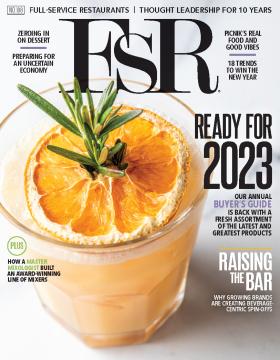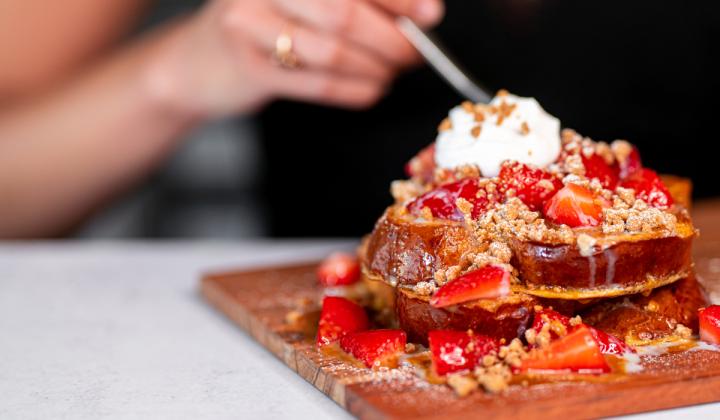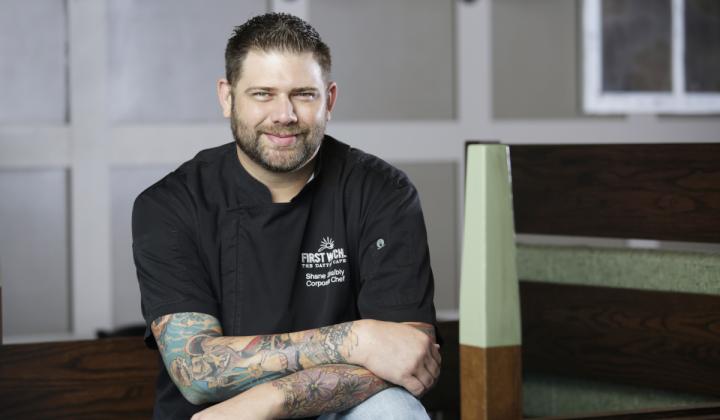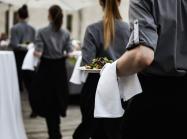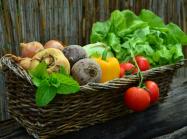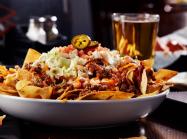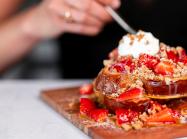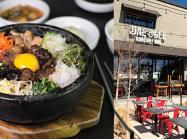How do you narrow all the ideas down and figure out what will actually work with your consumer base?
We take 60 ideas and circulate them around—what gets you excited? We all get our votes and we tally them up. Frequently, the really good ones naturally float to the top and get the most checkmarks. So we’ll take probably the top 10 or 12 of those ideas and work on them for the next two months. That’s the back and forth, that’s the R&D, the further refining of each one of those dishes. And sometimes the ideas that we wrote down in the beginning, they evolve quite a bit, and they're not always exactly how we imagined it. Then we do a big showing of the dishes we’ve been working on and taste through them all, and through that process, the ones that are going to win almost always come to the top. We might taste three French toasts, and we’re never going to run an LTO with three French toasts, so two of them are going to have to die. Sometimes that hurts a little bit, it breaks your heart.
You’ve said before you want to be an anti-chain. How does that philosophy inform your approach to crafting menu items?
I don’t want to have to sit down and wonder, are we going to have to shave five cents off this dish? Instead it’s, "make the dish as good as it can possibly be, and we’ll figure out the dollars." The movement and the excitement around it and the social media stories—authenticity is a word we throw around a lot, but there’s something to that. If we were running one or two restaurants, that’s how we would do it, so why do it differently just because we’re big? Figure out how to continue those relationships with growers and make sure there’s enough watermelon out there for us to do our Watermelon Wake-Up every summer. I don’t ever want to be complacent and just go, “Oh, well, we’re too big, we can’t do that.”
This summer marked the first time you introduced a shareable option during summer with the Bacon Cheddar Cornbread—why?
Traditionally, we've done shareables in fall and holidays. People are a little bit more indulgent, they're willing to spend a little bit more money. The last probably four years, we were frequently doing sweet shareables, things like donuts, or we're about to launch churros this fall, or big cinnamon rolls. We did a [culinary] tour in Austin, Texas, and most of the places we sat down, they were serving us cornbread at the table. And that stuck out in our heads—is there something here? A lot of times that's how it'll start. This is cool; does it have legs for us? Does it make sense in our environment, and can we make it our own? So we played around a long time with it, and we're like, cornbread [in the] summertime, that's where it should live; it didn't really feel right in fall or holiday.
If this has legs, the customer will let us know. And they proved to us that cornbread works in the First Watch world. But also, that a savory sharable is something they can get behind, because we've traditionally done pretty indulgent, heavy sweeter ones. So I think there was a lot to learn there. And everyone's super excited about it.

